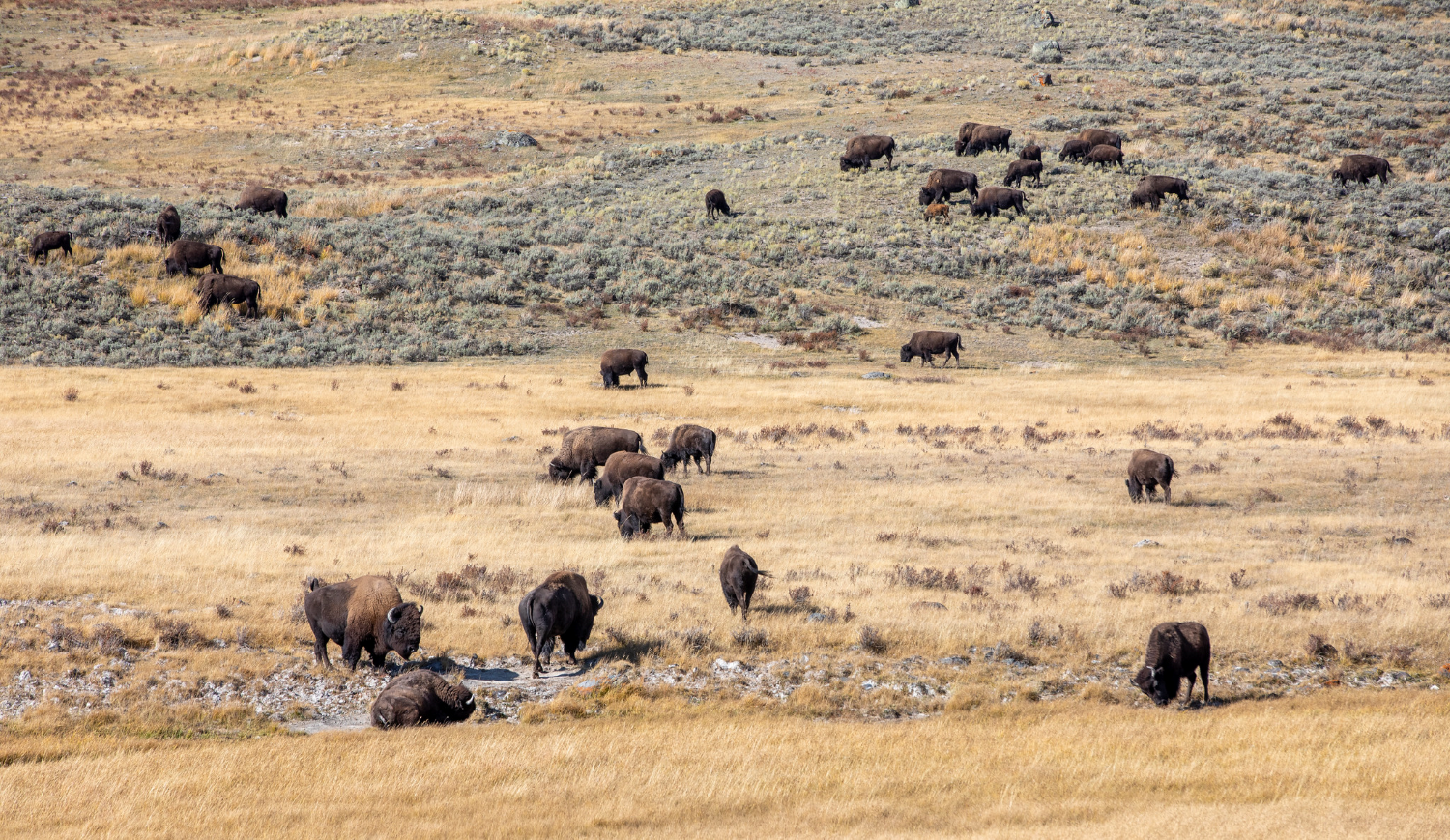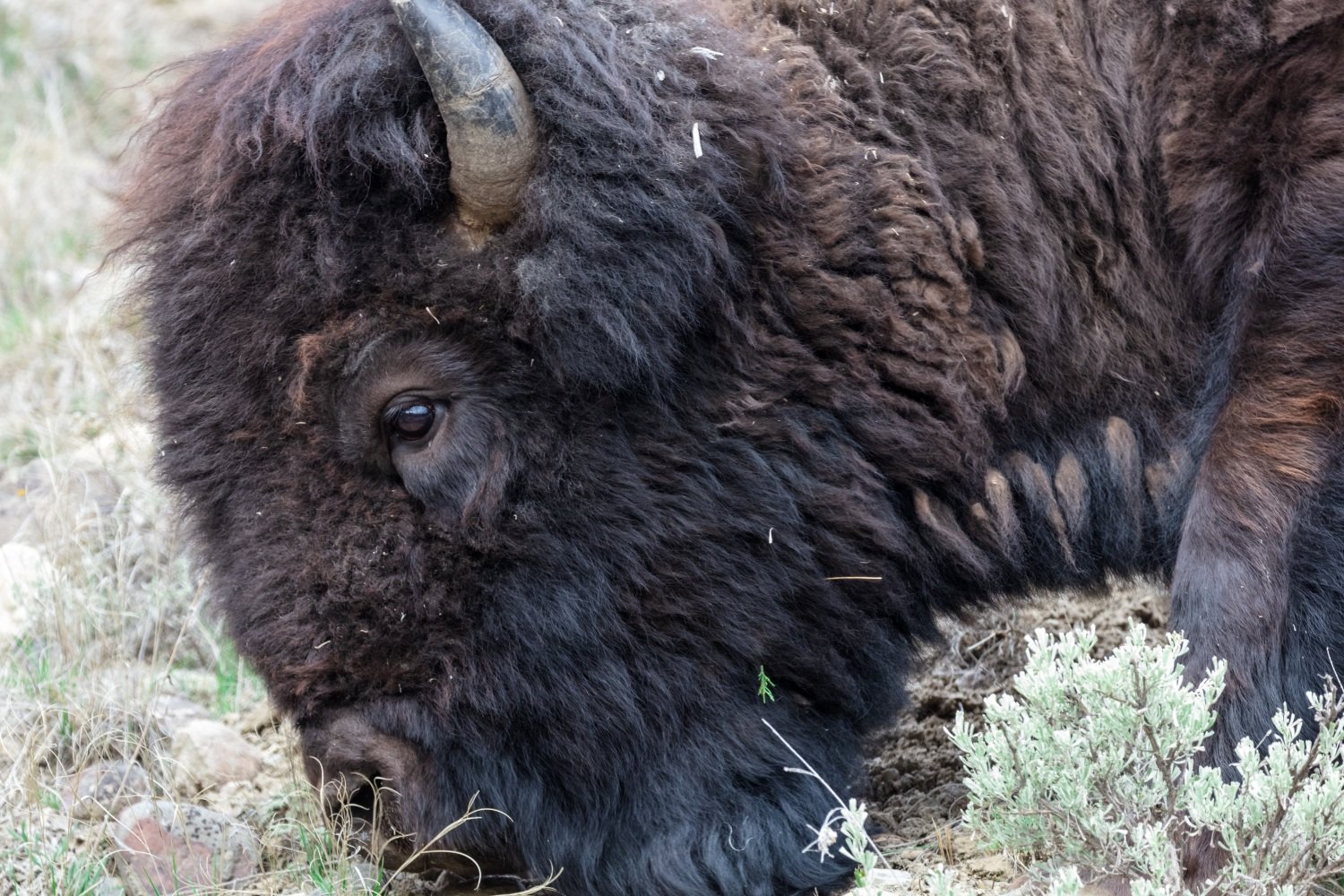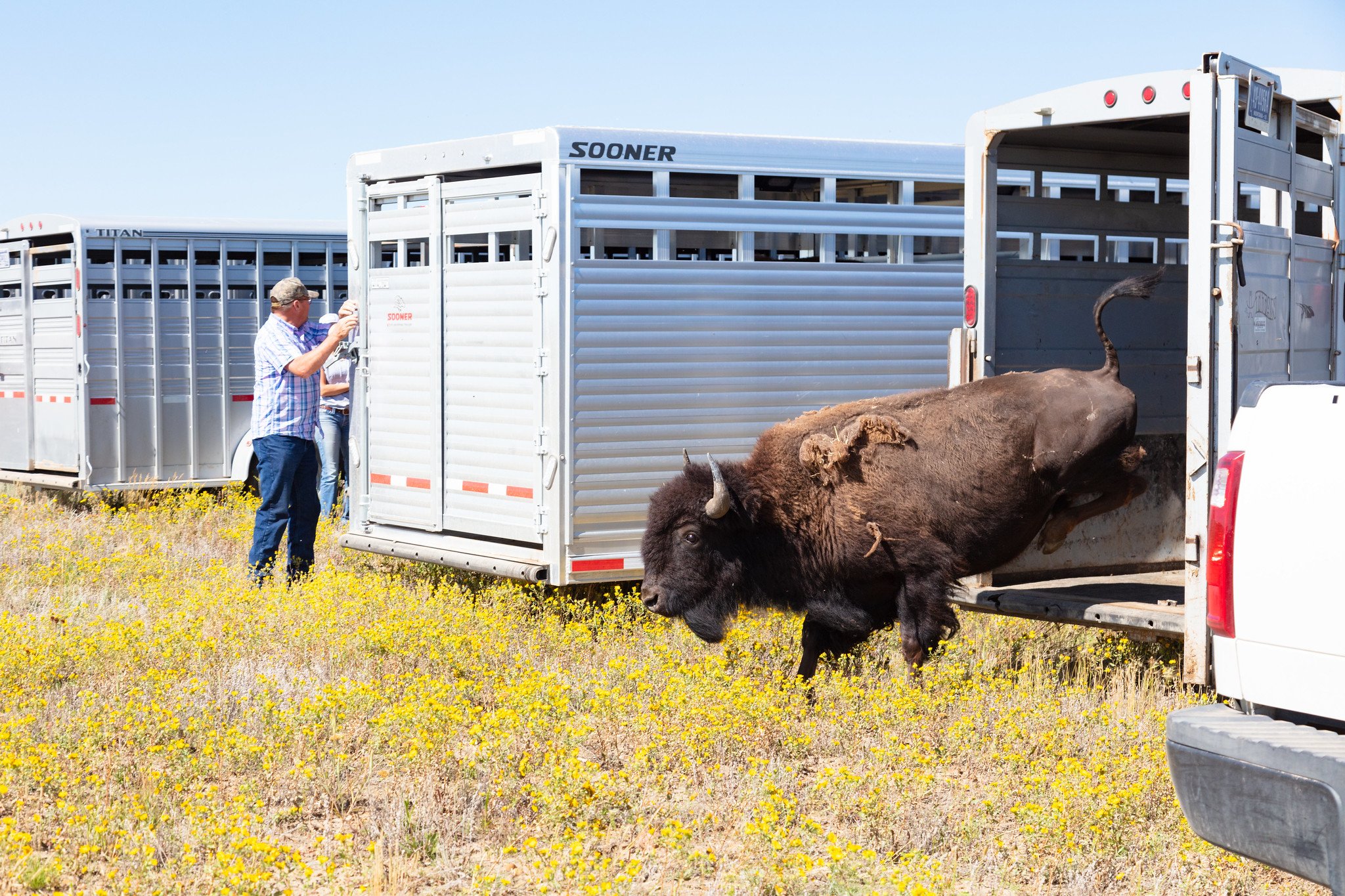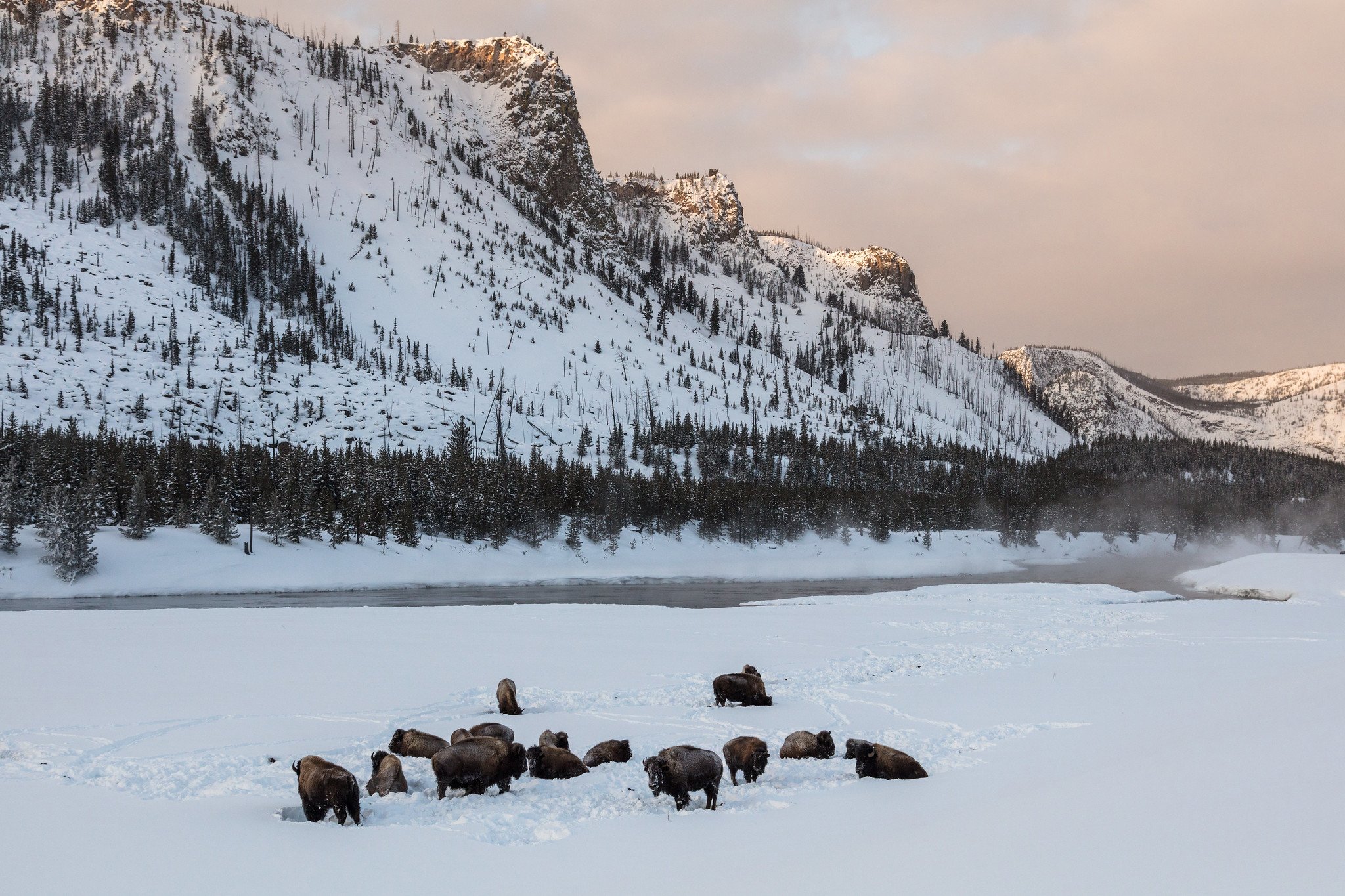
Restoring Native Buffalo
Wild American plains bison once roamed North America by the millions.
These animals – called “buffalo” by the Native people they once shared the landscape with – provided many Indigenous cultures with an essential source of food, tools, blankets, shelter, and more. Today, some of the last truly wild buffalo on the planet roam Yellowstone National Park. Over 49 Native American Tribes, including those of the Wind River Indian Reservation, have ancestral connections to these genetically and culturally incomparable animals. Today, more than a dozen Tribes hold Treaty Rights to hunt Yellowstone bison in order to sustain their relationship with the species, and many more Tribes hope to use Yellowstone bison to create and strengthen Tribal herds.
To the Eastern Shoshone and Northern Arapaho people of the Wind River Indian Reservation, buffalo represent power. They are a reminder of a past where Tribes lived in dynamic balance with nature, and they are the key to the restoration of the Indigenous ways of life. Each Tribe manages a buffalo herd on the reservation and is committed to seeing their herds grow in order to better support their culture, nutrition, and way of life.
The Greater Yellowstone Coalition supports the cultural and ecological restoration of buffalo to the Wind River Indian Reservation. Alongside our partners, we are working to expand the available habitat for buffalo on the reservation to the Tribal goal of 100,000 acres. We are also working to create and secure pathways for genetically incomparable wild Yellowstone bison to augment herd genetics. Reconnecting Tribes with buffalo and buffalo with Tribes not only honors Indigenous sovereignty and strengthens traditional ways of life, but returns buffalo to their rightful place on the landscape of Greater Yellowstone.





